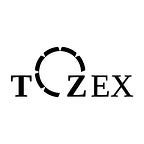Introduction
Every cryptographer wants people to be born with a secret key embedded in the brain. Then we could always prove our identity and not worry about the illegal use of personal information. Unfortunately, that is not possible in our universe, and even drawing a picture of this utopia seems naive. The current system of passwords and passports remains somewhat fragmented. Under this scenario, sensitive data falls into the wrong hands every now and then.
Blockchain is promised to start a revolution in the field of digital identity. The groundbreaking technology will deprive companies and governments of storing personal details and “revest” that authority to users themselves. In doing so, the users will be able to share their data with others and deny access to it at will. This ability is made possible through something called a self-sovereign identity (SSI). The relatively new term refers to a networked identity that can be used in various decentralized applications. It is subject to neither government nor company control. It is something that cannot be taken away. This idea really hits the spot, don’t you think?
What Makes SSI So Special?
It is generally accepted that a digital identity is the footprint we leave on the web. We are talking about documents, social security numbers, banking details, medical histories, accounts on different services — everything that directly links to a specific person. In modern computer systems, analyzing large amounts of information is a no-brainer. Tools for controlling user behavior are diverse and multifunctional, and social networks and web pages save a lot of data. Your identity can be easily established, no given name, surname, photos, or scanned copies of documents needed.
Understanding of the critical importance of issues related to the exchange of information between an individual and a network appeared quite a long time ago — around the time when cases of enormous amounts of leaked data arrays from the servers of service providers, banks, exchanges, and other institutions first came to light. News about mass leaks keeps coming. The frequency of occurrences is not going down. Solutions have so far been elusive. Increased security requirements for storage systems, improved data exchange standards, and powerful monitoring and control tools do not reduce the risks or eliminate new cases.
Without your permission, your personal details collected by websites can be used anywhere.
One wrong click can potentially result in identity theft. SSI does well with problems of digital identification. It is better than other methods because
- It’s built on open source and open standards
- It exists inside a trusted network
- It’s a blockchain-inspired tool
- It stores personal records outside of the public ledger
- It’s designed to eliminate “selective disclosure”
Today, it is necessary to present one’s passport to prove the attainment of the majority. Ultimately, along with the year of birth, the person reveals their name. The goal of the new method is to increase user privacy and security by allowing people to provide only the minimally required information. You don’t have to reveal all the data contained in the decentralized identifier. This feature merits special attention in this context.
The very concept of SSI is based on the assertion that our IDs are incredibly valuable assets prescribing sovereign ownership. As a result, any illegal or unauthorized use will be a violation of the sovereign property of the individual. Many organizations can potentially blur the line between “fair use” of our digital data and exceeding their power. In the European Union, stricter laws on safeguarding important information have been adopted. They stepped up online privacy, but there is still a need to widely disseminate solutions to protect IDs on the web because companies, advertisers, and researchers use them when navigating the web.
SSI is an idea that has become a reality, thanks to the blockchain. There have been a few projects to date that successfully deploy such solutions. However, by using the cryptographic principles underlying the groundbreaking technology, we can, for the first time, confirm ownership of the user identifier with the help of mathematical proofs.
In practical terms, the digital identity is stored in the chain of blocks. It cannot be faked because it will not be verified by other network participants. Similarly, like a private key in a diary is almost impossible to forge, personal information cannot be sent or transmitted without its rightful owner signing the corresponding transaction. We understand it can be tricky at first to imagine your ID stored in a single address in the blockchain, but once you get the hang of it, you’ll see why many users have already adopted this approach.
Concluding Thoughts
In 2020, COVID-19 has transformed the lives of millions of people around the globe. There is broad agreement that the spread of the deadly disease has greatly accelerated many processes and demonstrated to critics of digitalization and new technologies that progress is inevitable. Let’s face it: isolation has made us even more dependent on the digital space. The remote work trend will likely continue into the future (even after we triumph over the pandemic). As everyone struggles with the plague of the 21st century, system engineers and security professionals need to keep networks and systems safe. For some, this may be a problem because the work-from-home situation can bring new difficulties. But it should be kept in mind that this also creates opportunities for cybercriminals to take their illegal actions. Luckily, there is now a solution.
